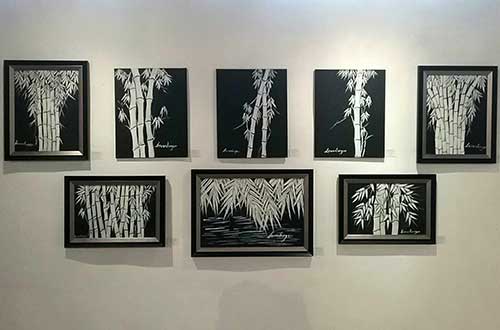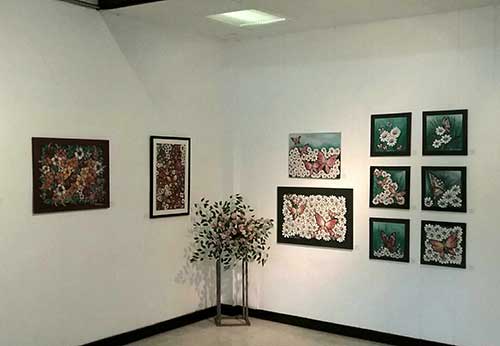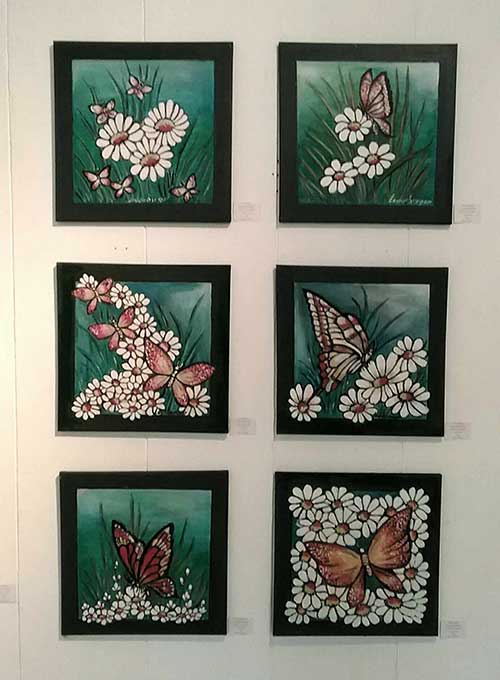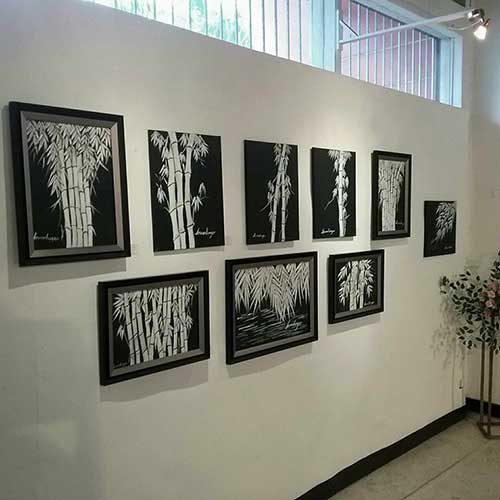By John Anthony S. Estolloso
There are flowers blooming on canvases at the museum.
The evening of July 20 witnessed the vernissage of Ms. Lillian Leuenberger’s exhibit of acrylic paintings at Museo Iloilo; covering an eclectic mix of the representational and the abstract, the collection of artworks – aptly entitled ‘Every Flower Blooms in Its Own Time’ – showcased a florid mélange of motifs, establishing the idea that art, at its heart, mirrors and imitates what nature provides, at its own time and circumstance.
The fact that the artist is an octogenarian amplifies the idea that art recognizes no age limit nor background; wherefore the Muses strike is beyond rhyme or reason, and for one who has lived her life surrounded by things beautiful, she has further essayed into and contributed to the creation of the aesthetic. While she has established herself as a leading figure in fashion design in the past decades, her explorations into canvas, paint, and brush have produced surprisingly picturesque and lovely results: at 83 years of age, Lillian Leuenberger bloomed as a painter.
Her themes and subjects are homely familiar: hibiscus fronds and other native flowers accented with butterflies, bamboo stalks and the rhythm of their flimsy leaves rendered in monochrome acrylics, landscapes inundated by sunlit tints of crimson and gold, and the splotches and patches of paint that evoke visual echoes from Rothko and Pollock.
While the elements utilized in the execution of the art lean towards the simplistic and austere, there is a minimalist grace that enshrouds these, lending a flamboyantly chromatic veneer to otherwise simple designs. Far be it for the writer to call the subjects mundane, these are nevertheless elevated to elegant and tasteful arrangements of lines, hues, and patterns.
In line with that observation, one striking feature that courses through her canvases is her penchant for patterns. Recurring throughout the exhibit are petals, leaves, and stalks, arranged in almost tessellated templates. This repetition of designs is further intensified by her choice of colors: vibrant complementary and analogous hues come together in sharp and pointed contrasts. For the viewer, this recurrence of elements seems to reminisce shared local experiences – and for one who grew up with summers spent in the flower-spattered tradition of Flores de Mayo, the florid images resonate with nostalgic familiarity.
Augmenting these representational images are attempts on mixed media. Miniscule rhinestones and sharply cut wooden pieces are embedded in some of her works, almost assuming (and adding) a tesserae-like quality to the paintings. The inclusion of cut segments of weaving made from local materials in one of her canvases lends a subtle though very perceptible Filipino identity to the art. Complementing this as well would be a rather divergent piece depicting two fighting cocks at the height of action, their feather splayed out in brilliant browns, ochres, and vermilions.
* * * * *
Right before the cutting of the ribbon to formally open the exhibit, host Dr. Vic Salas made a comparison of the artist to Grandma Moses (who started making art in her late 70s), and quite aptly so. Altogether, the collection of canvases – and Ms. Leuenberger’s belated artistic quest – seem to recall the first few lines of John Keats’s ‘Endymion’: “A thing of beauty is a joy for ever:/ Its loveliness increases; it will never/ Pass into nothingness; but still will keep/ A bower quiet for us, and a sleep/ Full of sweet dreams, and health, and quiet breathing./ Therefore, on every morrow, are we wreathing/A flowery band to bind us to the earth…”
One is never too late for flowers: Lillian Leuenberger just proved that with the blooming of her art in her own time.
[The writer is the subject area coordinator for Social Studies in one of the private schools of the city.]























